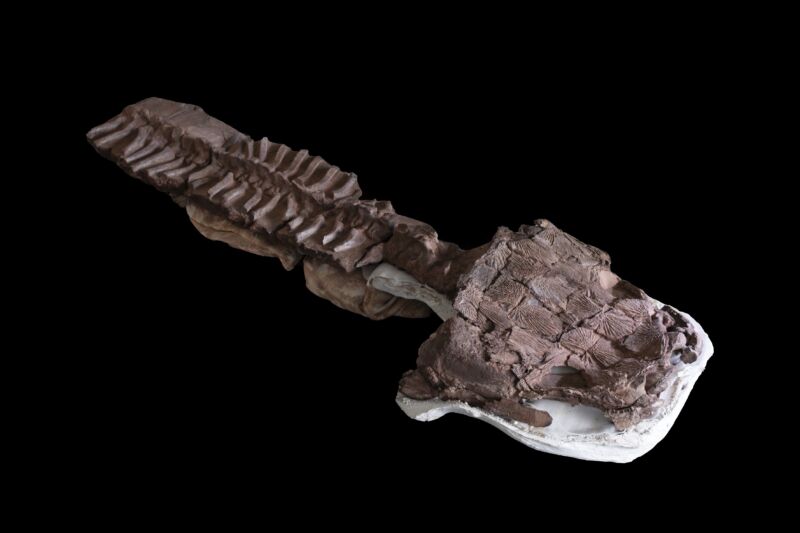Giant salamander species found in what was thought to be an icy ecosystem

Enlarge (credit: C. Marsicano)
Gaiasia jennyae, a newly discovered freshwater apex predator with a body length reaching 4.5 meters, lurked in the swamps and lakes around 280 million years ago. Its wide, flattened head had powerful jaws full of huge fangs, ready to capture any prey unlucky enough to swim past.
The problem is, to the best of our knowledge, it shouldn’t have been that large, should have been extinct tens of millions of years before the time it apparently lived, and shouldn’t have been found in northern Namibia. “Gaiasia is the first really good look we have at an entirely different ecosystem we didn’t expect to find,” says Jason Pardo, a postdoctoral fellow at Field Museum of Natural History in Chicago. Pardo is co-author of a study on the Gaiasia jennyae discovery recently published in Nature.
Common ancestry
“Tetrapods were the animals that crawled out of the water around 380 million years ago, maybe a little earlier,” Pardo explains. These ancient creatures, also known as stem tetrapods, were the common ancestors of modern reptiles, amphibians, mammals, and birds. “Those animals lived up to what we call the end of Carboniferous, about 370–300 million years ago. Few made it through, and they lasted longer, but they mostly went extinct around 370 million ago,” he adds.